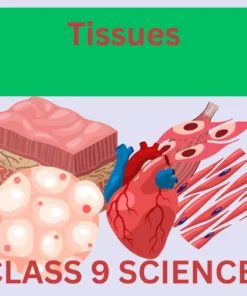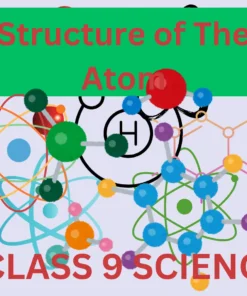Matter in our surroundings CLASS 9 SCIENCE
$40.00 Original price was: $40.00.$25.00Current price is: $25.00.
What is Matter?
Matter is a fundamental concept in science that encompasses everything that has mass and occupies space. It constitutes the physical substances around us and is essential for understanding various phenomena in the natural world. By defining matter, we can gain insight into its significance, especially in the fields of physics, chemistry, and biology.
Traditionally, matter is categorized into three primary states: solid, liquid, and gas. Solids are characterized by a definite shape and volume; their particles are closely packed, allowing them to maintain structural integrity. Liquids, on the other hand, have a definite volume but take the shape of their container, thanks to the relatively free movement of their particles. Gases possess neither definite shape nor volume; they expand to fill the space available, with particles that are far apart and moving rapidly.
In addition to the states of matter, matter can also be classified into pure substances and mixtures. Pure substances consist of a single type of particle and are further classified into elements and compounds. For instance, gold is an element, while water is a compound made up of hydrogen and oxygen. Mixtures, however, contain two or more different substances that are not chemically combined, such as air, which is a mixture of various gases. Understanding these distinctions is crucial as they inform how materials interact with one another in both natural and scientific contexts.
In everyday life, the knowledge of matter impacts various applications, from cooking to construction. The principles governing matter’s behavior are foundational not only in theoretical studies but also in practical technologies, thus underscoring the importance of grasping the concept of matter in our daily existence.
Changes in Matter
Changes in matter are fundamental processes that occur in our environment, significantly influencing the world around us. These changes can be classified primarily into two categories: physical changes and chemical changes. A physical change involves alterations in the physical properties of a substance, such as its shape, phase, or size, without altering its chemical composition. Common examples include the melting of ice into water, the boiling of water into steam, and the dissolving of sugar in tea. These transformations typically are reversible, allowing substances to retain their original properties upon the cessation of external conditions.
In contrast, a chemical change results in the formation of one or more new substances, accompanied by alterations in their chemical properties. For instance, when iron rusts, it reacts with oxygen and moisture to form iron oxide, demonstrating a change that is not easily reversible. Other everyday examples of chemical changes include digestion, combustion of fuels, and the tarnishing of silver. The key characteristic of chemical changes is the rearrangement of atoms, which leads to a change in the substance’s identity.
Central to the understanding of these changes are the laws of conservation of mass and energy. According to the law of conservation of mass, the total mass of reactants in a chemical reaction must equal the total mass of the products. Similarly, energy cannot be created or destroyed; it can only be transformed from one form to another, which is paramount during both physical and chemical changes. Conducting simple experiments, such as observing the phase changes of water or the reaction between baking soda and vinegar, can provide tangible insights into these principles.
Overall, recognizing physical and chemical changes is vital not only for understanding natural phenomena but also for the development of various human-made processes, such as manufacturing and cooking. These concepts are integral to the study of matter and its interactions in our surroundings.
Be the first to review “Matter in our surroundings CLASS 9 SCIENCE” Cancel reply
Related products
CLASS 9
CLASS 9
CLASS 9
Uncategorized











Reviews
There are no reviews yet.